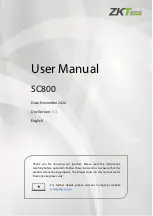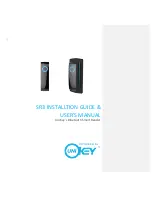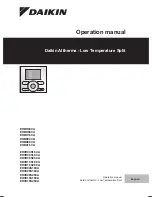
Remote Programming
115
CTC100 Programmable Temperature Controller
Next, select channel DIO and set the following parameters:
Now run the following macro by sending it over a serial port (in which case it all has to be on
one line) or by copying it ont
[
waitForSample
#d = 0
if (#V1>#t) { #d = 1 }
DIO = #d
#t += 1
if (#t>100) { #t = 0 }
]-1
To test the macro, set V1's value to 50 and plot channel DIO. You should see a square wave
with a duty cycle of 50% and a period of 10 seconds: high for 5 seconds, low for 5 seconds, high
for 5 seconds, etc. Reduce V1 to 25 and the duty cycle should go to 25%.
Before the feedback can be used, the PID gain factors will need to be set by using the automatic
tuning feature on channel V1. If tuning is successful, the feedback should now operate normally.
If more than one feedback loop is required, set up channels V2 and/or V3 as described for
channel V1, and add these lines after the { #d = 1 } statement:
if (#V2>#t) { #d+=2 }
if (#V3>#t) { #d+=4 }
The macro can automatically run every time the CTC100 is turned on; just send the command
Summary of Contents for CTC100
Page 1: ...Version 2 1 May 14 2019 User Manual CTC100 Cryogenic Temperature Controller...
Page 6: ......
Page 8: ......
Page 12: ......
Page 25: ...Operation 13 CTC100 Programmable Temperature Controller...
Page 85: ...Operation 73 CTC100 Programmable Temperature Controller To disable cascade cont select it...
Page 128: ......
Page 129: ...Remote Programming 117 CTC100 Programmable Temperature Controller...
Page 130: ......
Page 142: ......
Page 150: ......
Page 176: ......
















































